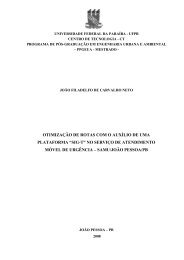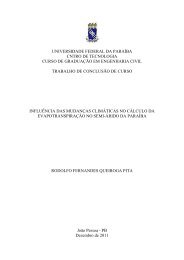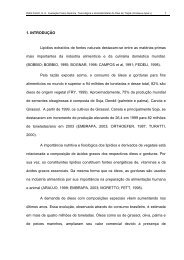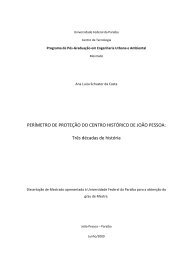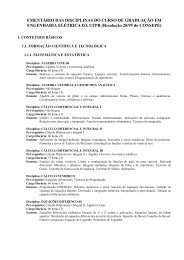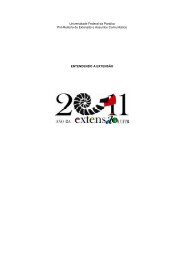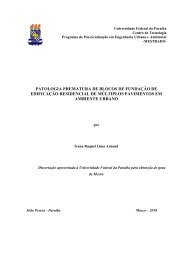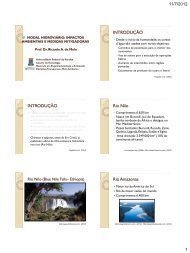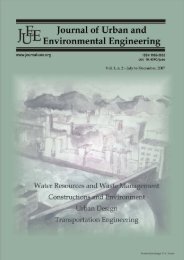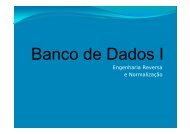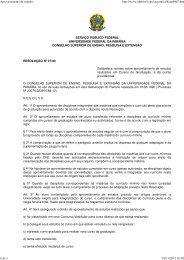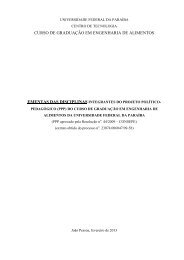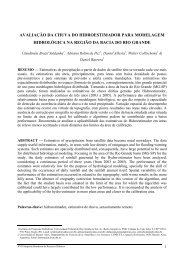editorial team
editorial team
editorial team
You also want an ePaper? Increase the reach of your titles
YUMPU automatically turns print PDFs into web optimized ePapers that Google loves.
Gobinath and Nagendran<br />
• Electricity consumption pattern<br />
• Water consumption pattern<br />
• Noise Audit<br />
• Social responsibility Studies.<br />
The data collection is done for a period of 6 months<br />
and in various stages of the educational year to check<br />
the detailed usage pattern of various resources, the<br />
details studied are used for the analysis.<br />
Energy audit<br />
Energy audit primarily is focusing on having efficient<br />
campus electricity consumption. The actions that will<br />
have significant electricity savings, reduction in the<br />
power factor and also providing a more efficient<br />
refrigerating system, as well as water distribution was<br />
determined. The following actions was carried out, real<br />
time readings of electrical energy consumption was<br />
taken in energy meters installed inside the campus at<br />
various locations, refrigerated water system operation<br />
wherever necessary (Ductable split A/C’s and other<br />
cooling units inside the campus ) was studied for the<br />
emission of CFC’s Lighting concepts in class rooms,<br />
laboratories, Computer rooms, Conference halls,<br />
Libraries, and other utility areas was be studied for the<br />
luminance and the comfort of the user by various<br />
methods and the techniques for lower power<br />
consumption was arrived by comparing it with<br />
literatures and brain storming session, i.e., substitution<br />
of lower power consumption methods instead of high<br />
power consumption techniques in all areas of the<br />
campus. Meter reading, campus electricity consumption<br />
details were utilized for the calculation.<br />
Each selected buildings were monitored for their<br />
power consumption rate on three separate periods; (1)<br />
examination period, (2) weekend, and (3) semester<br />
break period and the results were identified. The details<br />
calculated after the energy audit were given in the<br />
Table 1 from which the total energy consumption of<br />
Anna University per year is calculated.<br />
With the studies conducted it was found that the<br />
power consumption of a University is as follows:<br />
‣ Total electricity consumed per month (Average) =<br />
103 198 kWh.<br />
‣ Cost of electricity per month (Average) =<br />
1 076 911.00 Indian Rupees (U$D 4 120.00).<br />
This detail excludes unaccounted energy utilized in<br />
the form of power generator usage and miscellaneous<br />
uses. The above tables clearly prove the way the energy<br />
is utilized inside the campus for its operations and the<br />
amount spend on each department.<br />
With the collected information it’s also evident that<br />
the major electricity usage is by air conditioners inside<br />
Table 1. Summary of electricity bill<br />
Sl.<br />
HT5<br />
Total<br />
Month<br />
HT547 (kWh)<br />
N.<br />
(kWh)<br />
(kWh)<br />
1 July 75 839 28 200 104 039<br />
2 June 73 950 31 690 105 610<br />
3 May 70 500 25 010 95 510<br />
4 August 75 730 27 940 103 670<br />
5 September 81 730 31 890 113 620<br />
6 October 71 730 25 010 967.40<br />
Total<br />
(Indian Rupees )<br />
619 189<br />
21%<br />
10%<br />
3%<br />
6% 3%<br />
15%<br />
42%<br />
Air Conditioners<br />
Computers<br />
Fans<br />
Lighting<br />
Laboratory<br />
Others (Xerox, Motor & OHP) Unaccounted<br />
Fig. 1 Energy usage pattern inside a University.<br />
the campus which is also the potential source of CFC<br />
emission, which is to be controlled to make the campus<br />
a Green campus. The usage pattern is given in Fig. 1.<br />
It is advised to use the air conditioners more<br />
effectively and only in areas of necessity so that the<br />
power utilization is saved primarily for other major<br />
operations of the University The amount spend on<br />
electricity is also to be reduced since its more than<br />
greater than amount spend on any other resources<br />
(Bailey, 1997). Special measures are to be provided to<br />
prevent energy loss and wastage, guidance for the<br />
students is to be given by authorities to use electricity<br />
effectively.<br />
Water audit<br />
Water is biggest over head in any campus, process or<br />
operations and its essential for any business. A water<br />
audit can identify productive use and needless waste<br />
such as leaks prevention, reduced consumption, and<br />
money savings. A comprehensive water audit was done<br />
to uncover any costly inefficiency in the water<br />
distribution, utilization system that results in money<br />
literally pouring in drains. The water audit will<br />
eliminate the flaws in the unwanted utilization, wastage<br />
of water inside the University campus. The water audit<br />
was done on total water consumption, cost,<br />
consumption per capita, and other usage of water inside<br />
Journal of Urban and Environmental Engineering (JUEE), v.4, n.1, p. 29-36, 2010



